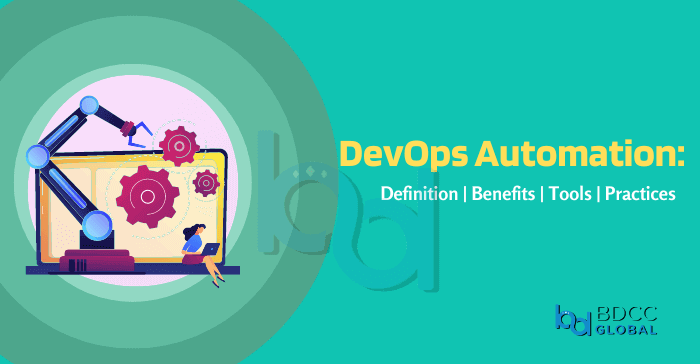
DevOps automation uses tools, scripts, and workflows to automate and streamline the software delivery and infrastructure management processes in a DevOps environment.
Development teams are constantly under pressure to deliver business applications that live up to the higher consumer expectations due to the quick expansion of the technology industry. The emergence of cloud-based apps has altered the conventional software development process. The monolithic software development structure has led to an agile design where developers continuously enhance the DevOps task automation program to match the changing client needs.
The DevOps methodology’s ultimate goal is “automating everything.” It seeks to automate and simplify each process without requiring human involvement by utilizing various automation tools or technologies.
Popular DevOps Automation Tools
The DevOps tools used for automation vary based on the specific needs and requirements of the organization. Let’s see the trending tools used in Dev-Ops automation –
- Terraform
- Ansible
- GitHub
- Kubernetes
- Jenkins
- Chef
The Need for DevOps Consulting Companies
If you lack internal expertise, deploying DevOps would be challenging. If you hire everyone internally, you must commit to a protracted hiring process and a difficult learning curve. You might outsource some or all of the process to a DevOps consulting business to prevent significant sunk expenses in this situation.
Consultants contribute their skills right immediately, saving you time on hiring. If you needed to gain a skill in your field or had to battle fiercely for it, obtaining this expertise could be challenging.
Timelines for implementation are shorter because of your DevOps consultant’s breadth of knowledge, which allows you to get started on your project faster and move forward more quickly.
Security Considerations When Implementing DevOps Automation
DevOps faces some main issues when security needs to be appropriately incorporated into the process in a DevSecOps architecture.
Security Is Not a Priority
Development teams have always had a cultural aversion to testing and security. Security was perceived by the development and operations teams as an impediment that slowed the development process. Pressure from management to release materials more quickly made this situation worse.
Cloud Safety
DevOps teams’ rapid usage of cloud computing poses unique security difficulties. The cloud lacks a well-defined network border and offers a larger attack surface than conventional on-premises installations.
DevOps Toolkits May Be Dangerous
All components of software delivery pipelines are automated by DevOps teams using a wide range of technologies. Many of these technologies, meanwhile, are open source, which may raise security issues. DevOps teams may only follow security best practices if the tools are safe.
Benefits of DevOps Automation
DevOps goals can be more easily attained because of automation’s several advantages.
Consistency
Processes that are heavily automated are also reliable and consistent. Until it is changed, a software automation tool will constantly do the same action. The same is not possible with manually operated procedures that have more chances of human errors.
Speed
DevOps Automation speeds up procedures like application deployment and code integration. First, a procedure may begin without waiting for a human to be prepared. When you rely on a human to carry out the procedure, it might not be possible to deploy a new release at 2 in the morning manually. Tools for automation eliminate delays.
Scalability
Scalability’s mother is automation. Often, procedures that can be managed by hand at a small size cannot be done at scale. For instance, if you just have to deal with one application and one production environment, you can manually deploy new versions. However, it becomes very challenging to quickly and reliably release new code when your team handles many apps and deploys them to diverse settings.
Best Practices associated with DevOps Automation
Streamline the DevOps toolchain
Pipeline variety and toolchain fragmentation reduce visibility and add to the complexity of the software delivery process. High tool and team dispersion make it difficult to centrally monitor and continuously improve the efficiency of the software delivery process. Although each tool gives context to its success, data cannot be shared readily, making it challenging to understand how your business is performing.
Keep the engineers informed
In reality, it’s typically not feasible to fully automate a DevOps workflow. DevOps automation still needs to eliminate the role of engineers. No matter how well-automated DevOps procedures are, they still require human inspection and involvement when anything goes wrong or has to be modified.
Ongoing observation
Continuous Monitoring (CM) is an essential aspect of DevOps automation, alongside CI and CD. It facilitates performance and infrastructure stability monitoring throughout the software’s lifecycle, enabling operations teams to troubleshoot using valuable information and data. Additionally, it offers developers the necessary details to debug and resolve issues.
Reliability
Incorporating reliability and resilience into automation is crucial for organizations to address urgent challenges and thrive in a rapidly changing business landscape.
Cost Benefits of Automating DevOps
DevOps eliminates time-consuming reconfiguration for various settings, lowering the cost of promotion and release. You write once and run everywhere using DevOps. It functions the same in development, testing, and production thanks to creating scripts that can execute in any environment. By establishing procedures like spin down/spin up scripts that ensure you’re only paying for resources during known periods of use, DevOps also lowers the cost of computing. Utilizing serverless infrastructure like AWS Lambda or GCP Functions will enable you to do this. By properly scaling systems and setting services with a single click, managed services provided by cloud providers may also save time and money.
Conclusion
DevOps automation is a crucial aspect of modern software development that can help teams increase efficiency, reduce errors, and accelerate time-to-market. By streamlining processes, automating repetitive tasks, and leveraging the power of continuous integration and delivery, organizations can improve collaboration and achieve their business goals more effectively. As the pace of software development continues to accelerate, the adoption of Dev-Ops automation is no longer just a nice-to-have, but a necessity for success in the digital age.

